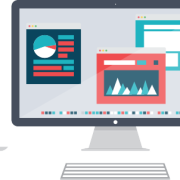Interested In IT Cost Reduction? Get Flat Rate Services from Teknique IT
Don’t Let IT Costs Takeover Your Business
Too often, we hear companies say that they can’t get a handle on their IT costs. It is true that IT infrastructure can get expensive, especially when you are trying to manage your IT and complete repairs and maintenance on your own. But what if you had a partner that specialized in IT? One that could offer you managed services that could significantly reduce downtime, 24/7 network monitoring, a dedicated IT staff proactively solving problems, and more, all for a fixed flat fee each month? Teknique IT does just that, by helping companies get the IT cost reductions they need. Our goal is to help you maximize your business by reducing IT costs so that you can dedicate resources towards creating more value for your clients. You can count on us to find and solve IT problems, before they become problems.
Benefits of Flat Rate IT Solutions
When you are paying a technician to come in and repair your IT infrastructure, you’ll quickly find that paying by the hour gets very expensive. An even bigger issue is that the technician is performing a one-off job, and will likely not be there for support in the future. With a flat rate IT solution, you are paying for 24/7 support that you can count on. For a fixed, flat monthly fee, you get a team of IT support staff who will be there for any of your IT issues. Not only will your support team fix the problem, but they will provide future support and maintenance so that you can feel comfortable that your systems will continue running smoothly. You can increase your productivity by knowing that all of your IT needs are covered.
Maximize Your Company’s Potential
Teknique IT’s goal is to help your business maximize its potential. You can’t do that if you are inefficiently managing your IT infrastructure. We’ll help with cost reduction, so that you can get the most out of your IT infrastructure without paying heavy fees each time you need a repair or maintenance. We’ll provide you with IT consulting and the support you need to tackle any IT infrastructure problem or project. If you want proactive support that will cover your software, hardware, servers, and networks, then you’ve found a long term partner in Teknique IT. Our team is ready to get to work helping your business become more efficient.










